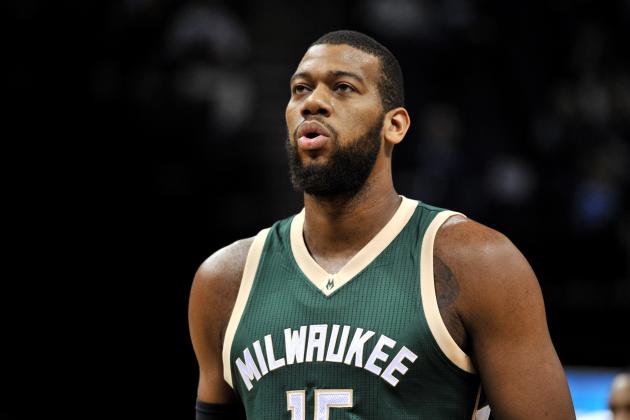The 2014/15 Milwaukee Bucks were one of the biggest surprises in the NBA. After finishing 15-67 the previous year, the Bucks righted the ship and finished 41-41 even after losing the #2 overall pick, Jabari Parker to an ACL tear early in the year. But this past season, the Bucks took a step back and finished with a record of 33-49. There were some bright sports, most notably the development of the Bucks' big three - Giannis Antetokounmpo, Jabari Parker, and Khris Middleton - but the season was largely a disappointment. So where should the Bucks go from here?
One of the reason for the Bucks' struggles this season was the inability to shoot from beyond the 3 point arc. The Bucks 34.5% 3 point shooting was good for 22nd in the league. Apart from the shooting woes, the Bucks struggled defensively and their biggest free agent signing in years, Greg Monroe, did not fit in well with the rest of the young Bucks core.
The Bucks need to move on from Greg Monroe and find someone else to take over at that position. There are plenty of teams who could use someone with Monroe's skill set, just not the Bucks. Of course, Miles Plumlee came on strong at the end of last year, and seemed to develop good chemistry with Giannis who will be the team's point guard moving forward. However, I think he's a best suited for a role off the bench. His contract is up this year and he will be a restricted free agent, but if the Bucks can sign him to a reasonable deal - somewhere in the neighborhood of 3 years and 20 million, I'd be okay with him returning as a backup.
As for finding a starter, I think the Bucks should use their #10 pick in the draft on a center prospect like Jakob Poetel, Skal Labissiere, or Henry Ellenson - all of whom are expected to be taken anywhere from 5th to 15th. Of course this could all change if the Bucks get lucky in the NBA draft lottery and move up to a top 3 pick (sidenote - I detailed how the NBA lottery works last week if you missed it).

So with the Bucks picking up a center in the draft, and retaining Plumlee, that leaves us with the question of what to do with John Henson. This is where it gets fun - I think he would be a perfect fit for the Toronto Raptors. The Raptors could lose their rim protector Bismack Biyambo in the offseason and Henson could slide right in to that spot. In exchange for Henson the Bucks would receive Terrence Ross.
Ross is a 6-7 guard/forward who can defend and is a career 38% 3 point shooter - the type of player the Bucks desperately need. Henson is slated to begin the first of a 4 year 44 million dollar contract extension next season while Ross will begin the first of a 3 year 31.5 million contract extension. The money and cap hit is essentially the same on both sides, making this much more likely to become a reality. Both players are also young(24) and have yet to hit their prime. I think it's a deal worth looking into for the Bucks.


